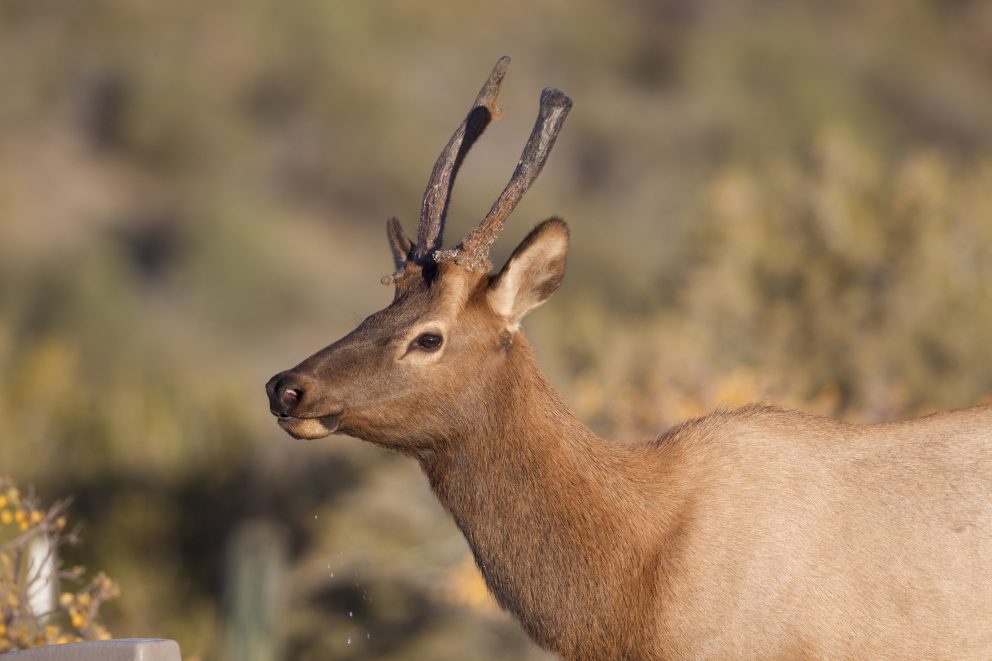- SCIENTIFIC NAME
- Cervus canadensis
- CLASSIFICATION
- Mammal
- LIFE SPAN
- 10-13 Years
- SIZE
- 72-96” | 500-1100lbs
- STATE CONSERVATION STATUS
-
- State Protected
- FEDERAL CONSERVATION STATUS
- Least Concern
- GAME STATUS
- Game
- GAME TYPE
- Big Game
- Washoe
- Humboldt
- Pershing
- Churchill
- Mineral
- Lyon
- Douglas
- Carson City
- Storey
- Elko
- Lander
- Eureka
- White Pine
- Esmeralda
- Nye
- Lincoln
- Clark
Habitat & Range
Elk habitat varies from prairies, forested areas, sagebrush flats, deciduous forests, even swampy valleys and mountain meadows.
- Alpine and Tundra
- Cold desert shrubland and sagebrush
- Upland Forests
Threats
- Chronic Wasting Disease
Natural History
Female Rocky Mountain Elk give birth to calves in late spring early summer. Calves are born with spots and are scentless to help camouflage them and protect them from predators. They also remain as motionless as possible for their first weeks of life, especially when their mothers have to leave them in search of food.
Rocky Mountain Elk are herbivores and feed on a wide variety of plants including grasses, shrubs, trees, and flowers. They are ruminants and have a four-chambered stomach in order to properly digest their plant-based diet.
Only the male Elk grow antlers, and growing their antlers is a natural feat. They grow and shed a new set of antlers every single year. During the growing season their antler are covering in a furry coat called velvet. Velvet is full of blood vessels that bring all the necessary minerals to grow antlers and grow them fast. Elk antlers can grow up to an inch a day!
Fun Facts














